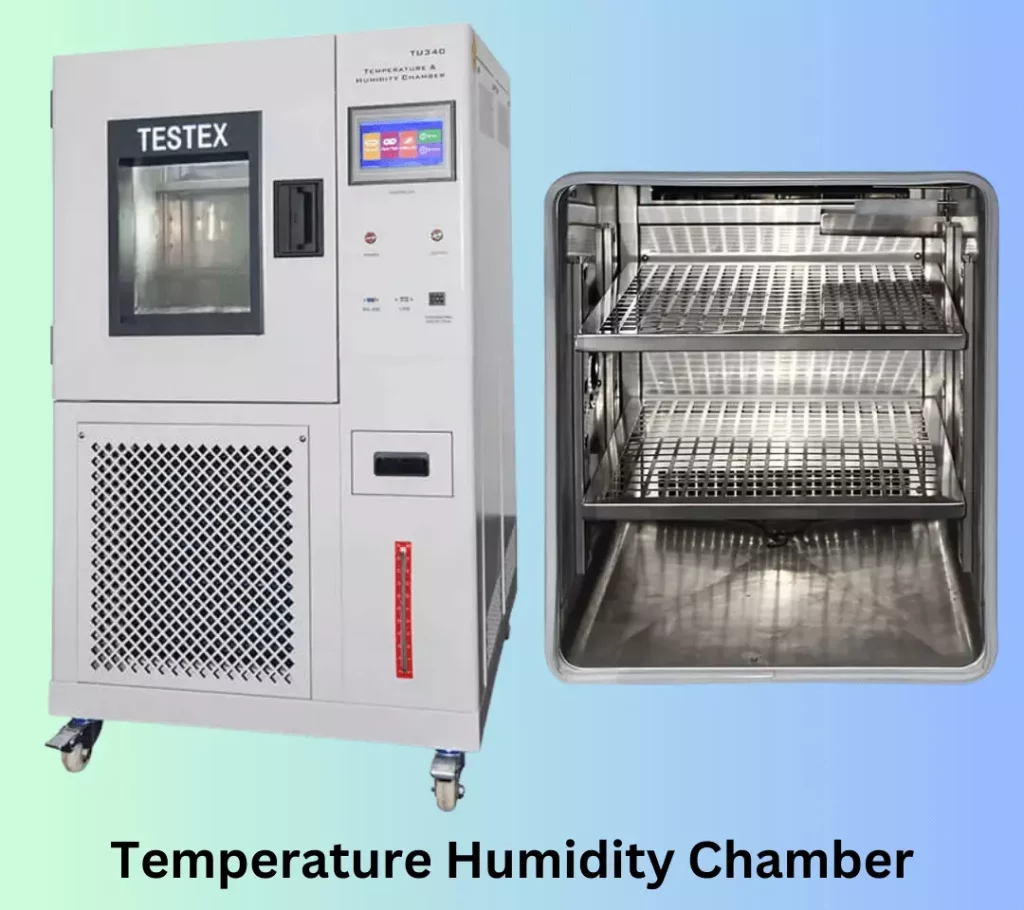Looking to test the performance of materials in extreme environments? A temperature humidity chamber, also known as a constant temperature and humidity test machine, is the ideal solution. Learn how this versatile equipment can assess heat resistance, cold resistance, dry resistance, and moisture resistance performance. Discover its applications, benefits, and frequently asked questions in this comprehensive guide.

Temperature Humidity Chamber
In the world of material testing, understanding how materials perform under different environmental conditions is crucial. Whether it’s electronics, automotive parts, or pharmaceuticals, ensuring product reliability and quality is essential. That’s where a temperature humidity chamber comes into play. This cutting-edge equipment provides controlled and repeatable conditions to assess the impact of temperature and humidity on various materials.
What is a Temperature Humidity Chamber?
A temperature humidity chamber, also referred to as a constant temperature and humidity test machine, is a specialized testing device used to create precise environmental conditions. These chambers simulate extreme temperatures and humidity levels, allowing manufacturers, researchers, and quality control teams to evaluate the performance and durability of materials.
How Does a Temperature Humidity Chamber Work?
Temperature humidity chambers comprise an insulated chamber that can accommodate test samples or products. The chamber is equipped with heating and cooling elements, as well as humidity control mechanisms. The user sets the desired temperature and humidity levels, and the chamber maintains those conditions throughout the test duration.
For instance, if testing the heat resistance of a material, the chamber can be set to reach high temperatures while maintaining a specific humidity level. This enables the assessment of how the material behaves under extreme heat and humidity, providing valuable insights into its performance.
Example:
Let’s say a smartphone manufacturer wants to test their device’s performance in a hot and humid environment. They place the phone inside the temperature humidity chamber and set the conditions to 40°C and 80% humidity. The chamber then replicates these conditions, allowing the manufacturer to observe any potential issues such as overheating, condensation, or performance degradation.
Applications of Temperature Humidity Chambers
Temperature humidity chambers find applications across various industries. Here are a few examples:
1. Electronics Industry
Assessing the performance of electronic components under extreme conditions – Evaluating the impact of temperature and humidity on circuit boards, connectors, and displays
2. Automotive Industry
Testing the durability and reliability of automotive parts under harsh weather conditions – Analyzing the impact of temperature and humidity on engine components, lighting systems, and electronic control units.
3. Pharmaceutical Industry
Evaluating the stability and shelf life of drugs and vaccines under different storage conditions – Testing the packaging materials’ resistance to temperature and humidity fluctuations
Benefits of Temperature Humidity Chambers
Using a temperature humidity chamber offers several advantages, including:
1. Realistic Simulation
Temperature humidity chambers can create precise conditions that replicate real-world environments, providing accurate data on material performance.
2. Controlled Testing
These chambers allow users to precisely control temperature and humidity parameters, ensuring repeatability and comparability of test results
3. Time and Cost Savings
By simulating extreme conditions, manufacturers can identify potential issues early in the development process, reducing product development time and avoiding costly failures in the field.
4. Quality Assurance
Testing materials in a temperature humidity chamber helps ensure product reliability, durability, and compliance with industry standards and regulations.
Frequently Asked Questions (FAQs)
What are the temperature and humidity ranges that temperature humidity chambers can achieve?
Temperature humidity chambers can typically achieve temperature ranges from -70°C to +150°C and humidity levels from 10% to 98% relative humidity (RH). The specific temperature and humidity ranges depend on the chamber model and manufacturer. It’s important to choose a chamber that can accommodate your testing requirements.
Can temperature humidity chambers perform cyclic testing
Temperature humidity chambers can perform cyclic testing, where they alternate between different temperature and humidity levels to simulate real-world conditions more accurately. Yes, many temperature humidity chambers offer programmable cycling capabilities, allowing users to create custom test profiles with multiple temperature and humidity stages.
How long does a typical test in a temperature humidity chamber last?
The test duration in a temperature humidity chamber depends on the specific requirements of the material or product being tested. It can range from a few hours to several weeks. It’s important to consult the testing standards or guidelines relevant to your industry to determine the appropriate test duration for your specific needs.
Are temperature humidity chambers easy to operate?
Temperature humidity chambers are designed with user-friendly interfaces and intuitive controls. Manufacturers provide detailed manuals and training to ensure operators can effectively use the equipment. While there may be a learning curve for first-time users, temperature humidity chambers are generally straightforward to operate with proper training and familiarization.
Can temperature humidity chambers be customized for specific testing requirements?
Yes, many manufacturers offer customization options to meet specific testing needs. This includes chamber size, temperature and humidity range, additional features, and integration with external measurement devices. If you have unique testing requirements, it’s advisable to discuss your needs with the manufacturer or supplier to explore possible customization options.
Conclusion
Temperature humidity chambers are indispensable tools for evaluating the performance and durability of materials in extreme environments. By subjecting materials to controlled temperature and humidity conditions, manufacturers, researchers, and quality control teams can assess their resistance to heat, cold, dryness, and moisture. The realistic simulation, precise control, and time-saving benefits of temperature humidity chambers make them essential in industries such as electronics, automotive, and pharmaceuticals. Choose a temperature humidity chamber that suits your testing needs and unlock valuable insights into material behavior.
Customer Review
“We’ve been using the temperature humidity chamber from XYZ Corporation for over a year now, and it has been instrumental in our product development process. The chamber’s precise control and realistic simulation capabilities have helped us identify potential issues early on, saving us time and resources. The customer support from XYZ Corporation has also been outstanding, ensuring smooth operations and prompt assistance whenever needed. Highly recommended!” – John Doe, R&D Manager, ABC Manufacturing Inc.



